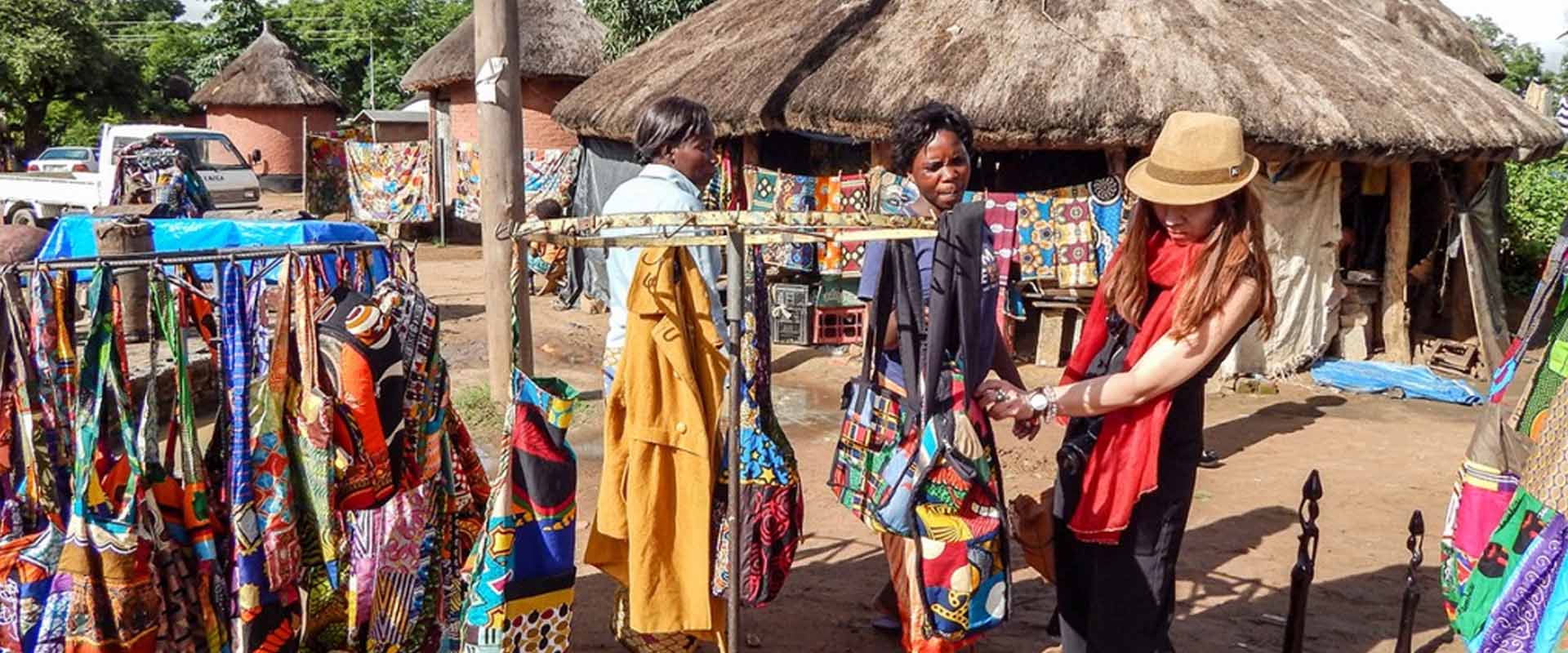
Kabwata Cultural Village
Make sure to visit Kabwata Cultural Village when in Lusaka; it is one of the city’s highlights, where you will find traditional Zambian artifacts and hand-carved crafts to take home as souvenirs and gifts.
Kabwata Cultural Village, part of Lusaka’s history
Visit this authentic village consisting of huts which were built in the 1930s and 1940s by the colonial government, to house single men who left their families behind to work in Lusaka. Later in the 1970s the government demolished most of the huts to replace them with flats. In the 1974, the center was purchased by the Zambian government to preserve the region’s traditional lifestyle, following the adage: “A nation without culture is dead.” The place was turned into a cultural center (The Kabwata Visual Arts and Cultural Association, KAVICA), and 43 huts (Rondavels) were saved. It is now a Zambian national monument, giving you the feel of village life in colonial times. Artists from all over Zambia are now found here. This is one of the best places in Zambia to find some local curios.
Skilled Zambian craftsmen
Get an overview of Zambian handicrafts with 80 resident artists from nine Zambian provinces such as woodcarvers, basket weavers, and many more who display their crafts. Watch them working on their products, such as wood figurines of humans, birds and animals, walking sticks, drums, spears, traditionally designed textiles and fabrics, beads, masks, or drums. Kabwata Cultural Village empowers artists to step outside their comfort zones and to embrace their creativity by combining their own experiences in this modern culture with their heritage, to create something beautiful. Meet the craftsmen and directly buy the artifacts they’ve just created in front of your eyes.
Savor Zambian traditional food
The cultural village has a laid-back traditional outdoor restaurant called Tigwilizan, serving all the main Zambian delicacies. The restaurant provides over 10 different local vegetables such as an indigenous eggplant called “impwa,” cassava leaves (katapa), sweet potato leaves (kalembula), dried amaranth (bondwe), or pumpkin leaves (chibwabwa). Sample traditional food cooked from recipes passed down orally from one generation to the next. Don’t miss their greens in peanut sauce (ifisashi), or if you feel more adventurous, indulge in their special village chicken (inkoko ya kutumba), village chicken in peanut sauce (inkoko ya kusashila), grilled game meat (inama ya mpanga ya kocha), or even fried caterpillars (ifishimu fya kusalula). If you’re visiting the region in winter, save your Sunday to enjoy traditional performances of local dancers spicing up your dining experience.

